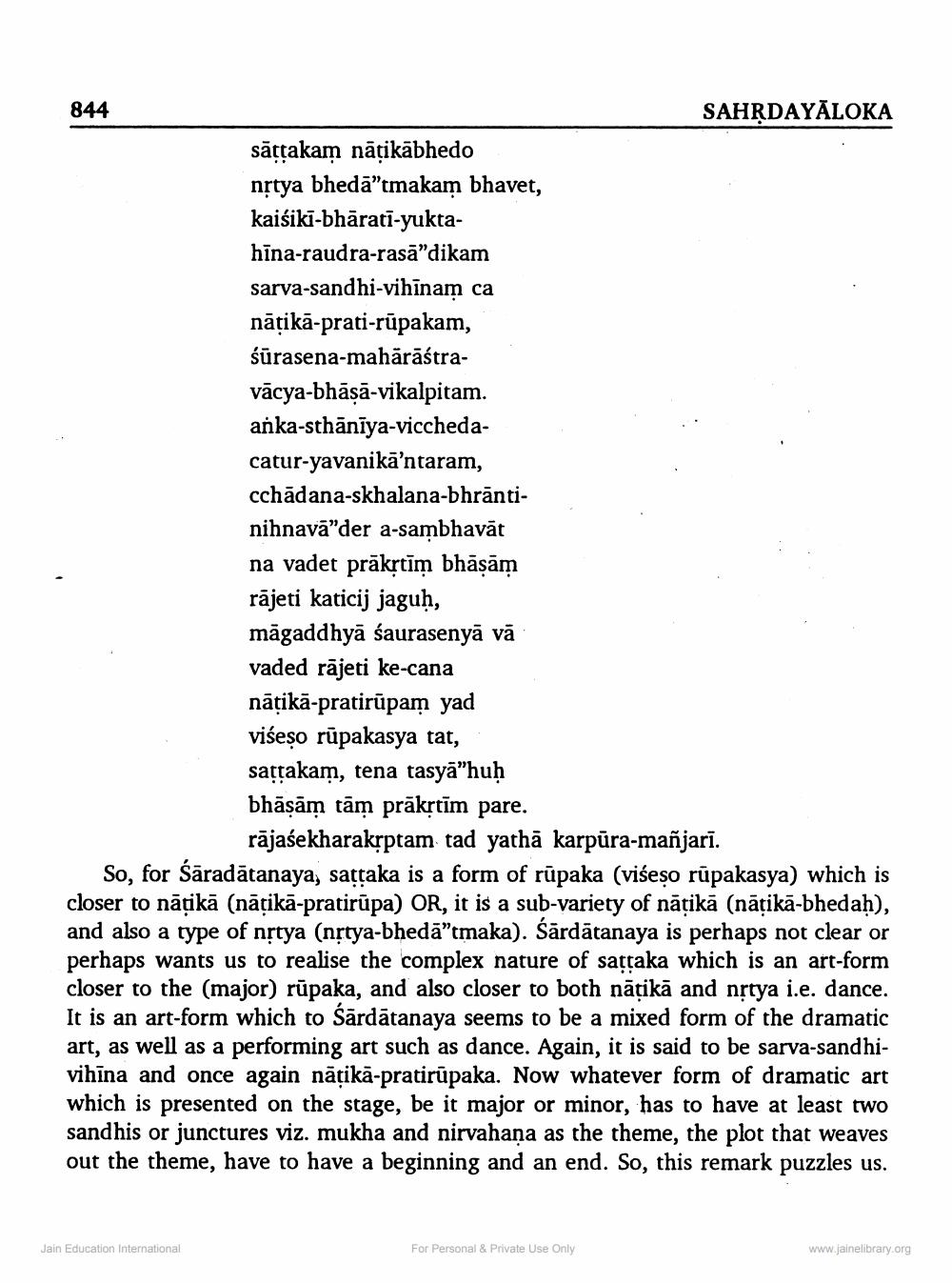________________
844
sāṭṭakam nāṭikābhedo nṛtya bhedā❞tmakam bhavet,
Jain Education International
kaiśiki-bhāratī-yukta
hina-raudra-rasā"dikam
sarva-sandhi-vihīnam ca
nātikā-prati-rūpakam,
śūrasena-mahārāśtra
vācya-bhāṣā-vikalpitam.
anka-sthānīya-viccheda
catur-yavanika'ntaram, cchadana-skhalana-bhrānti
nihnava"der a-sambhavāt na vadet prākṛtīm bhāṣām rajeti katicij jaguḥ, māgaddhyā śaurasenyā vā vaded rājeti ke-cana nātikā-pratirūpam yad viseṣo rūpakasya tat,
saṭṭakam, tena tasyā"huḥ
bhāṣām tām prākṛtīm pare.
rājasekharakṛptam tad yathā karpūra-mañjarī.
So, for Śāradātanaya, saṭṭaka is a form of rūpaka (viseṣo rūpakasya) which is closer to nāțikā (nāṭikā-pratirūpa) OR, it is a sub-variety of nāțikā (nātikā-bhedaḥ), and also a type of nṛtya (nṛtya-bheda❞tmaka). Śārdātanaya is perhaps not clear or perhaps wants us to realise the complex nature of saṭṭaka which is an art-form closer to the (major) rūpaka, and also closer to both nāțikā and nṛtya i.e. dance. It is an art-form which to Śārdātanaya seems to be a mixed form of the dramatic art, as well as a performing art such as dance. Again, it is said to be sarva-sandhivihina and once again nāțikā-pratirūpaka. Now whatever form of dramatic art which is presented on the stage, be it major or minor, has to have at least two sandhis or junctures viz. mukha and nirvahana as the theme, the plot that weaves out the theme, have to have a beginning and an end. So, this remark puzzles us.
SAHṚDAYALOKA
For Personal & Private Use Only
www.jainelibrary.org




